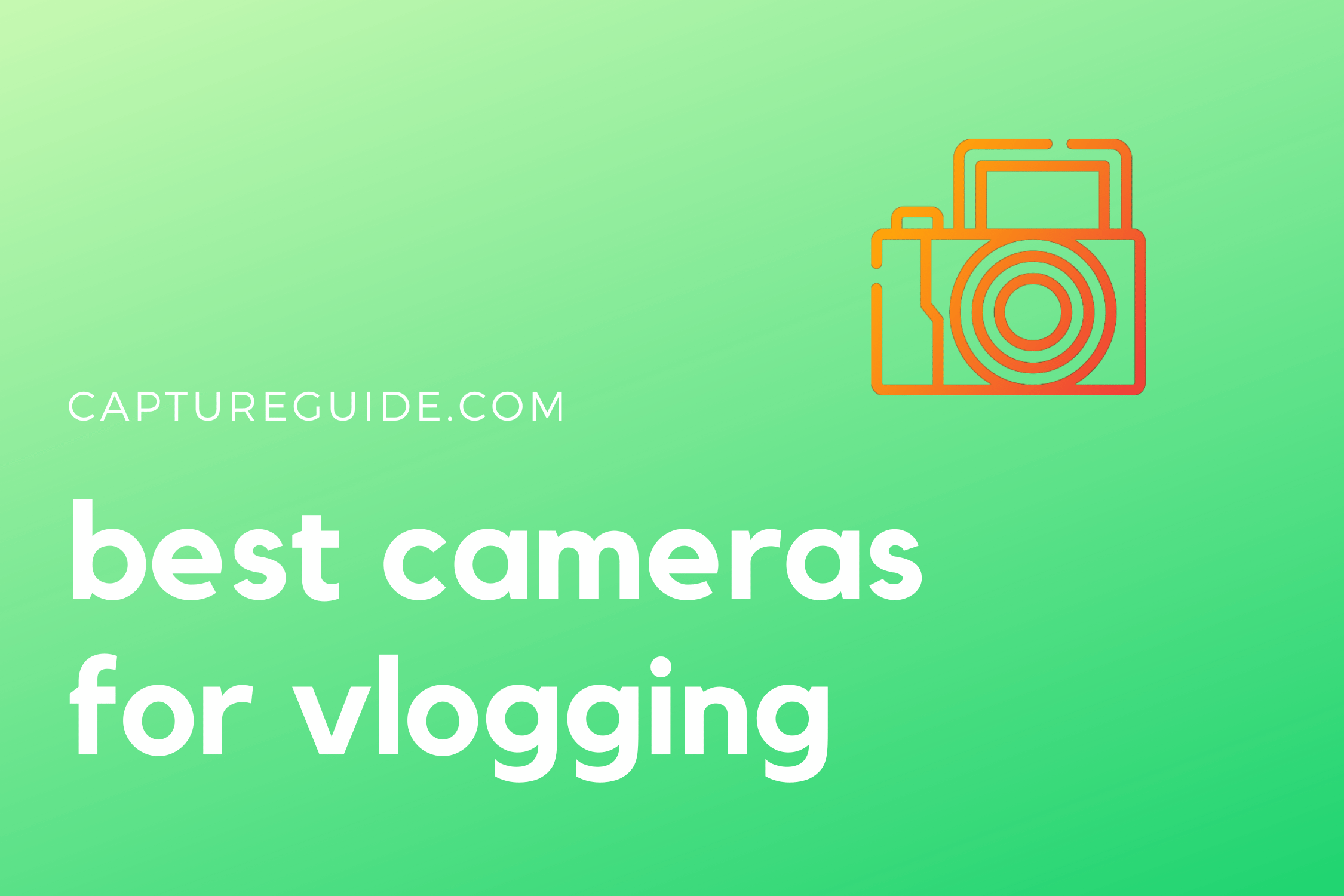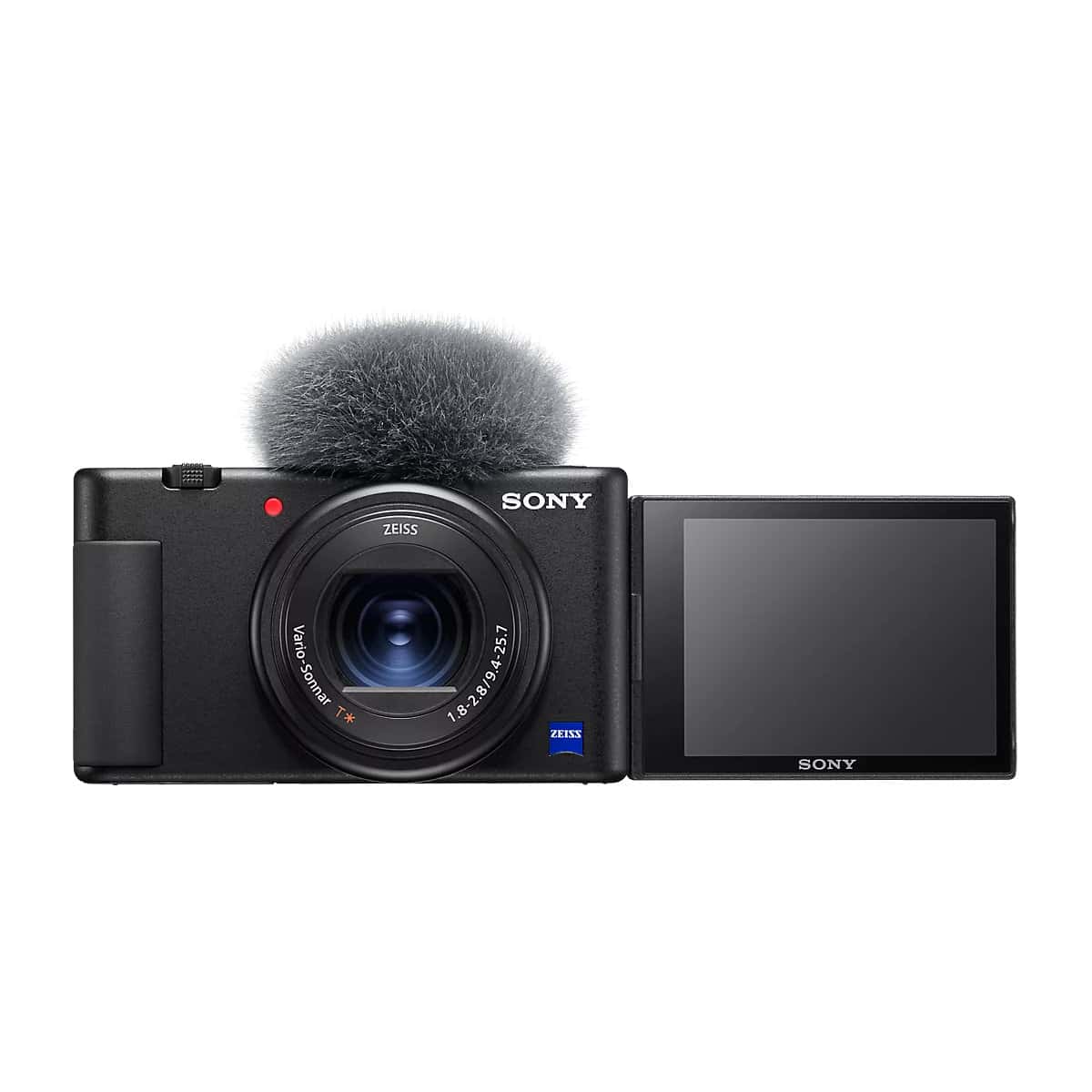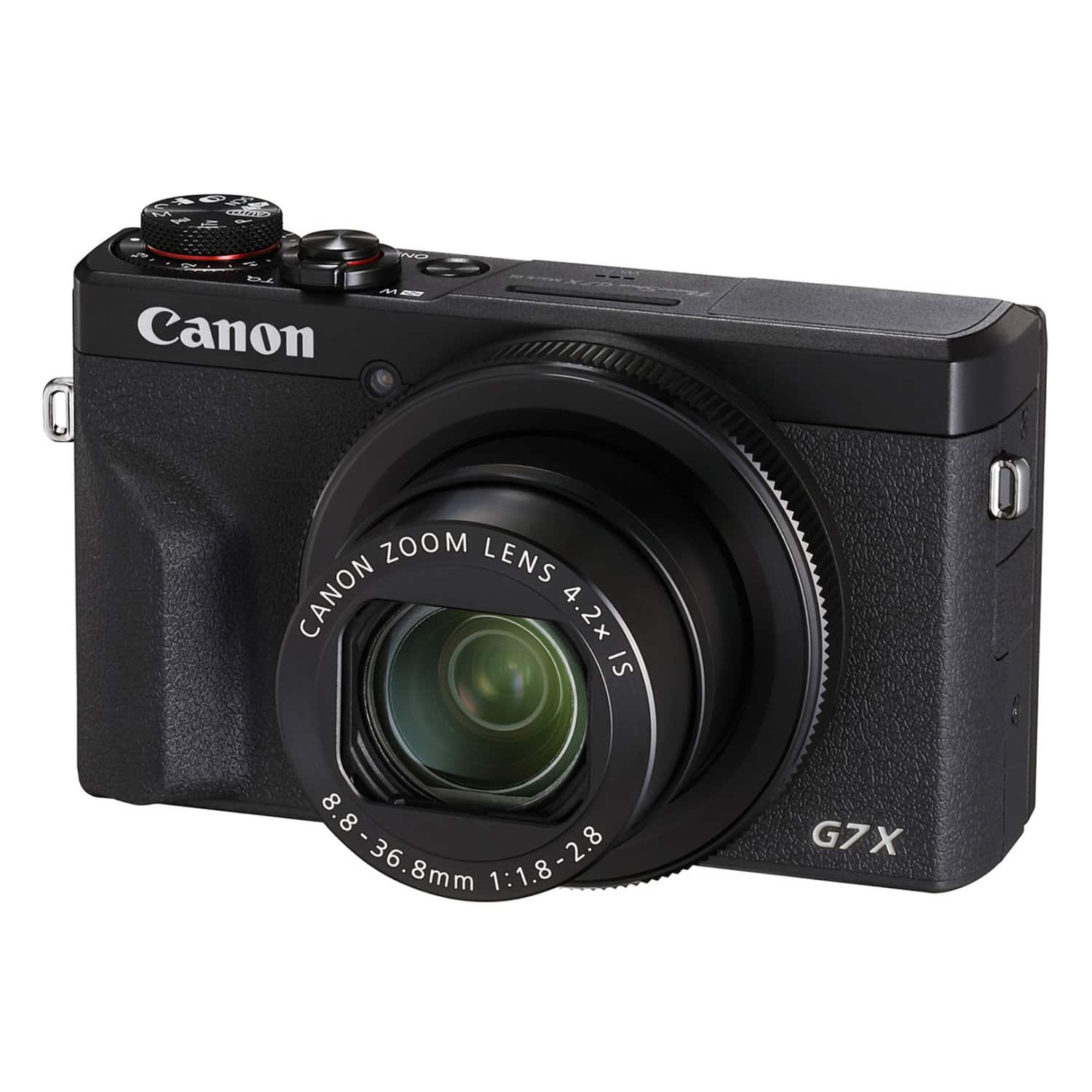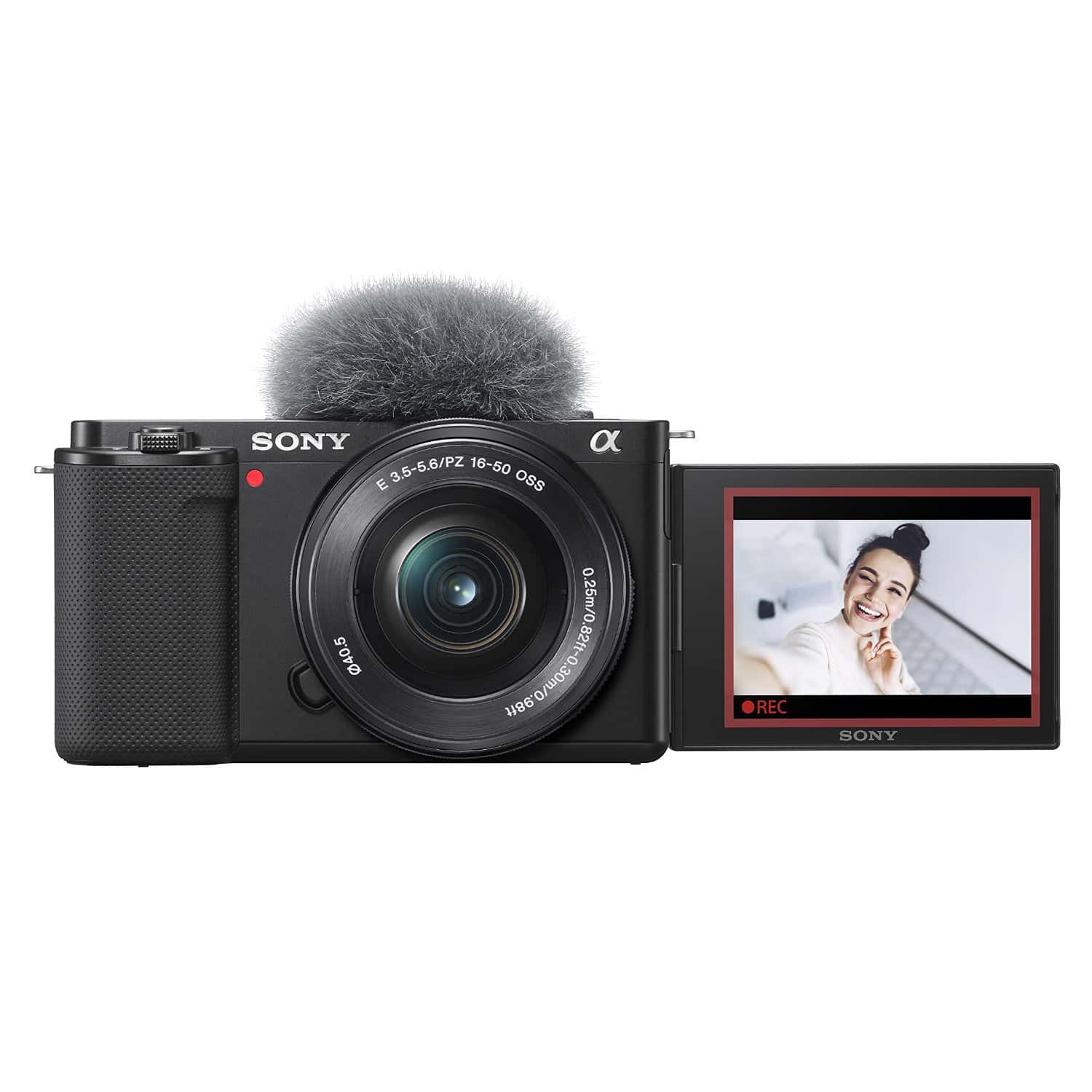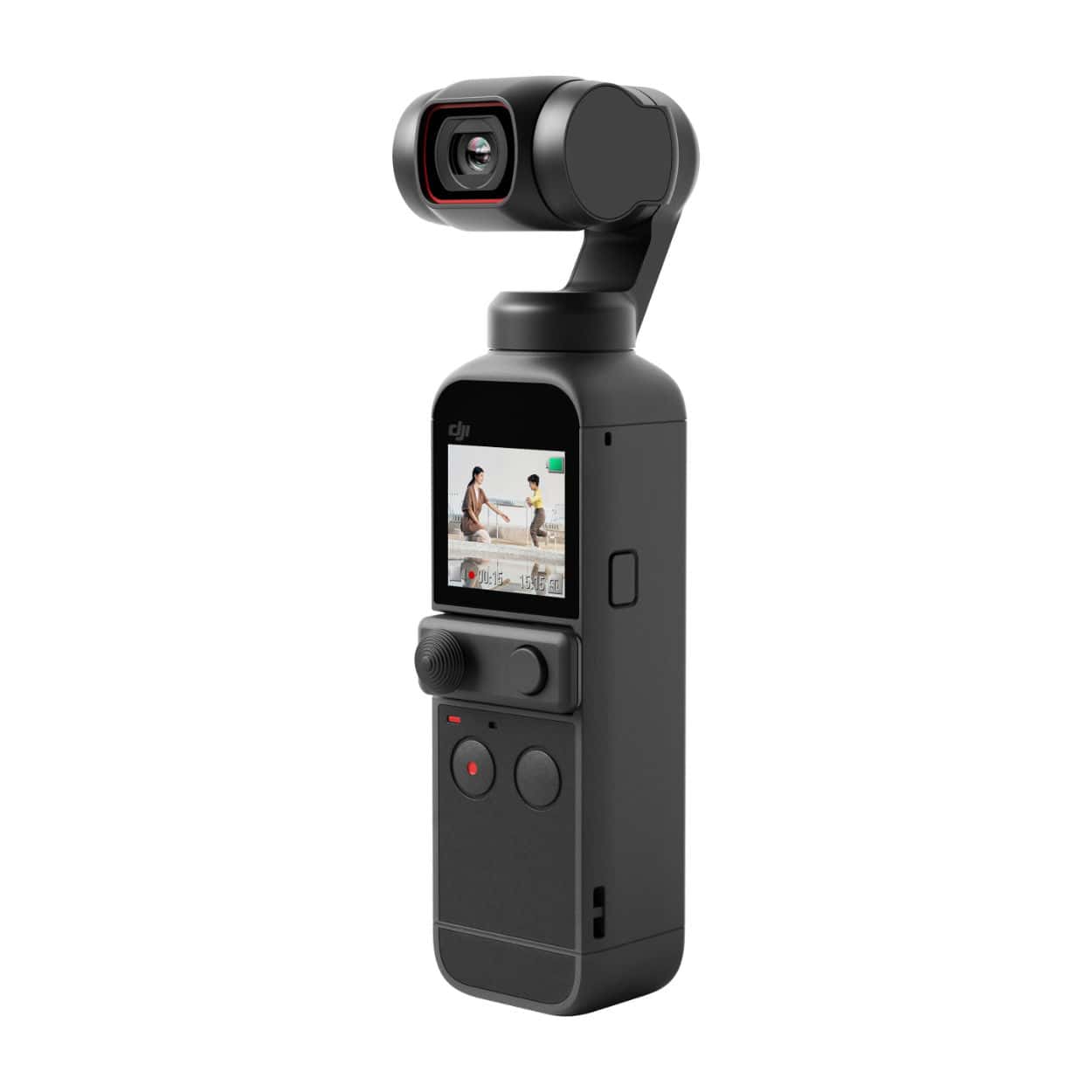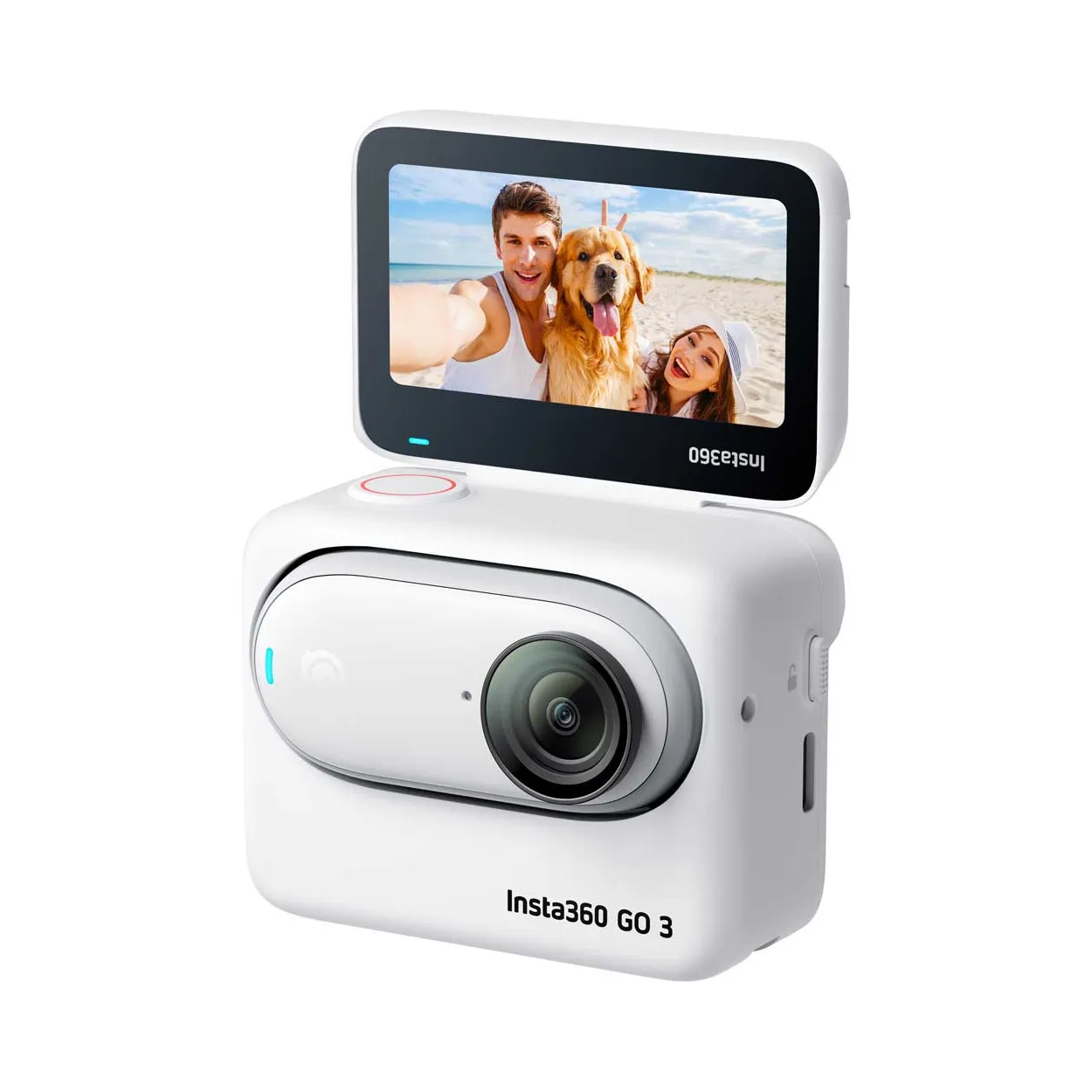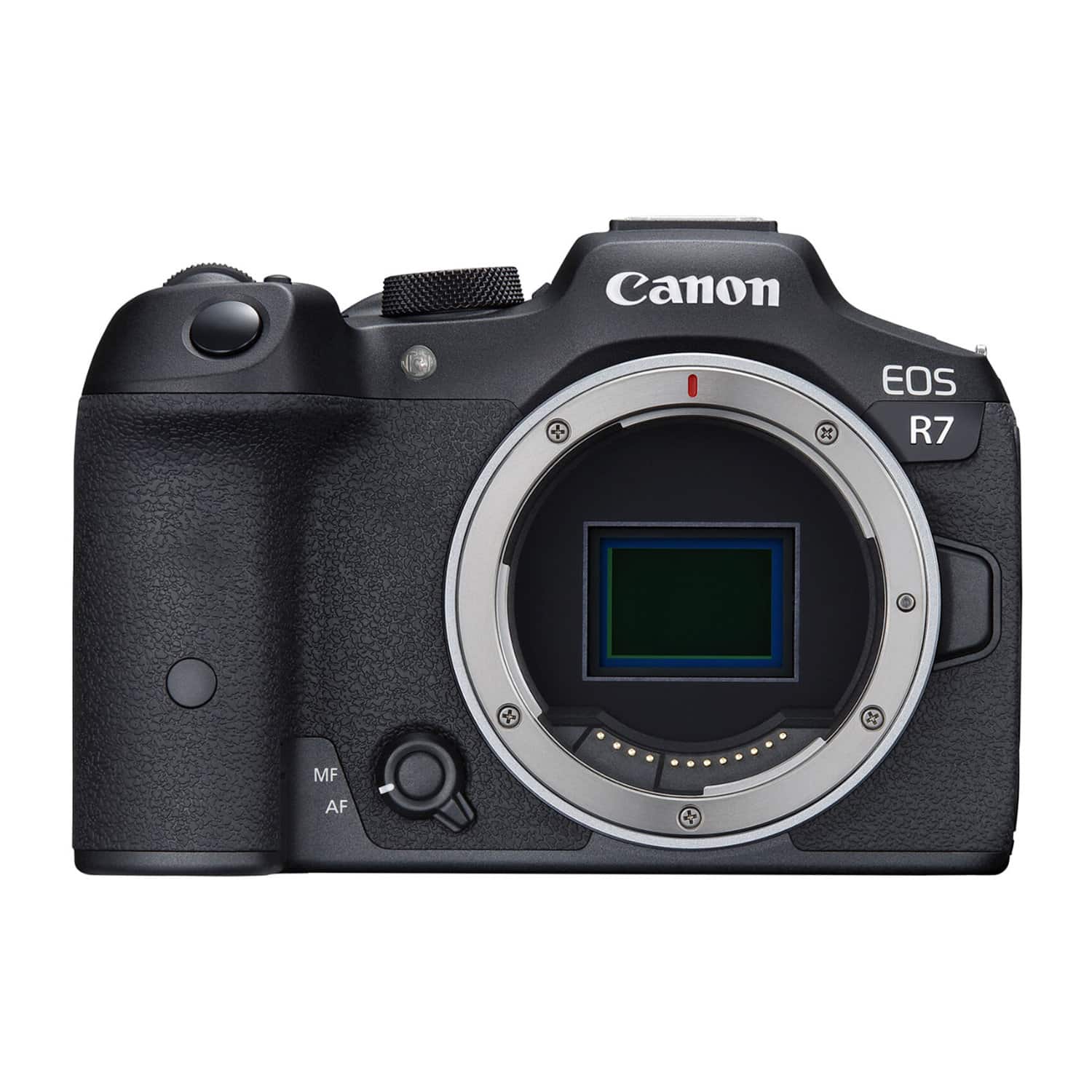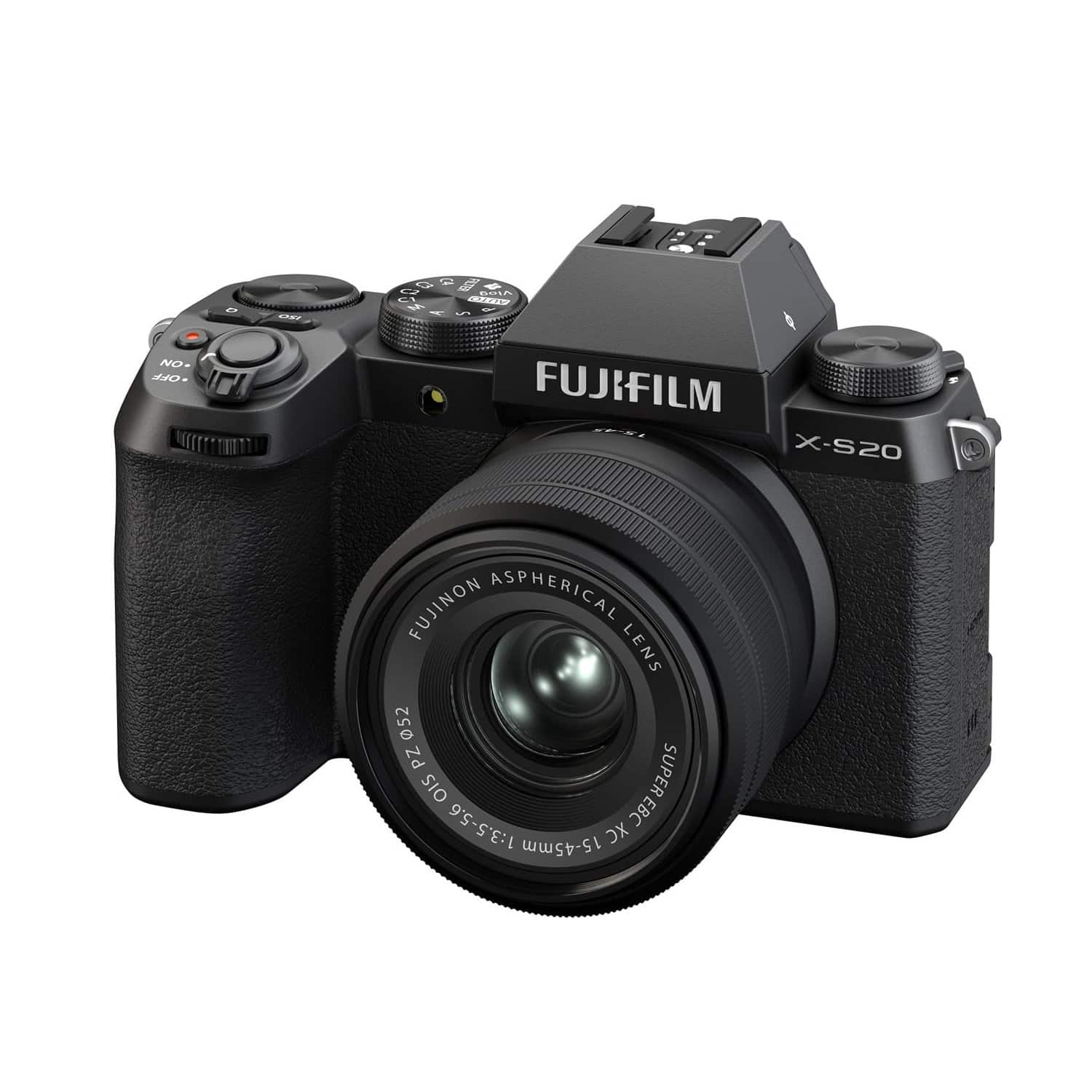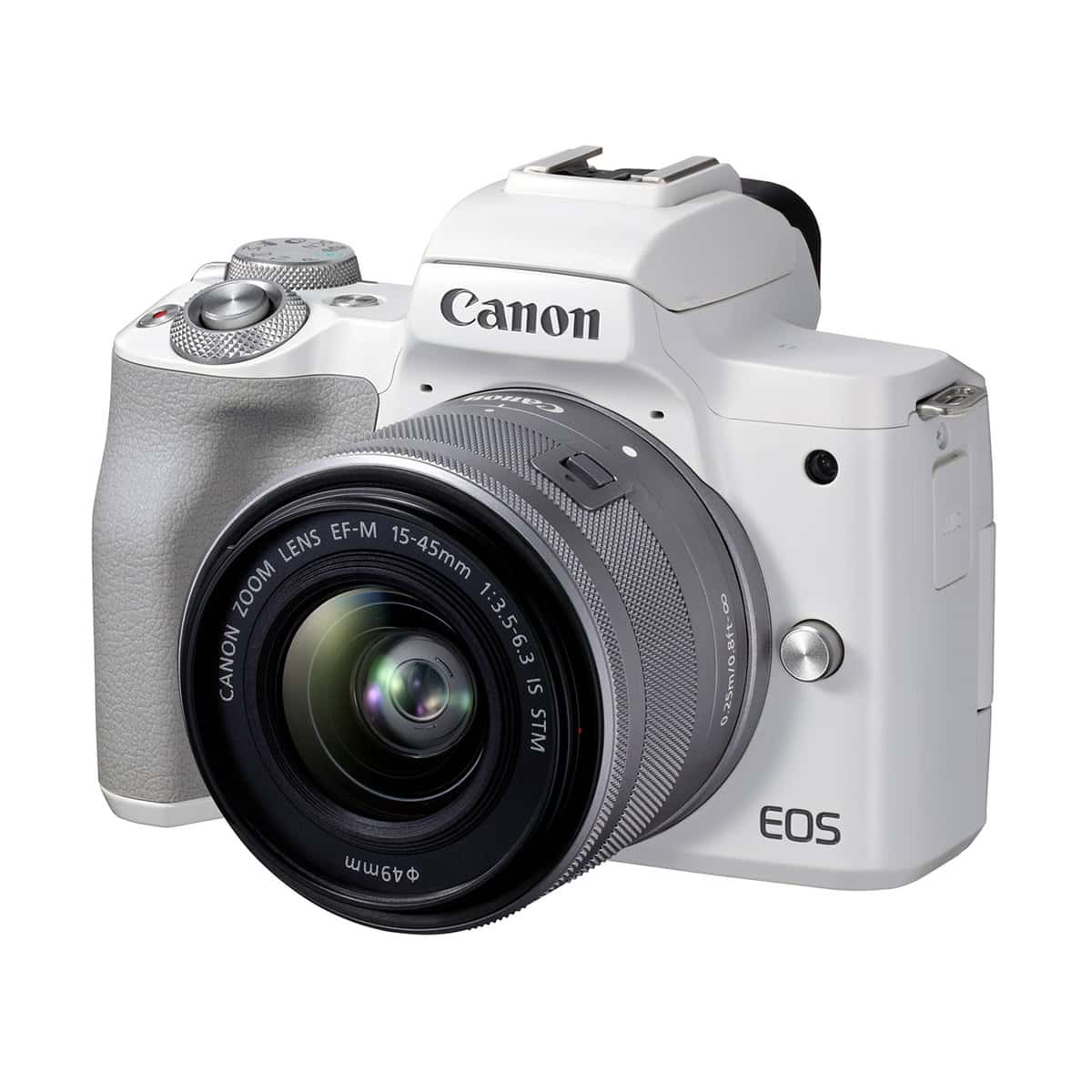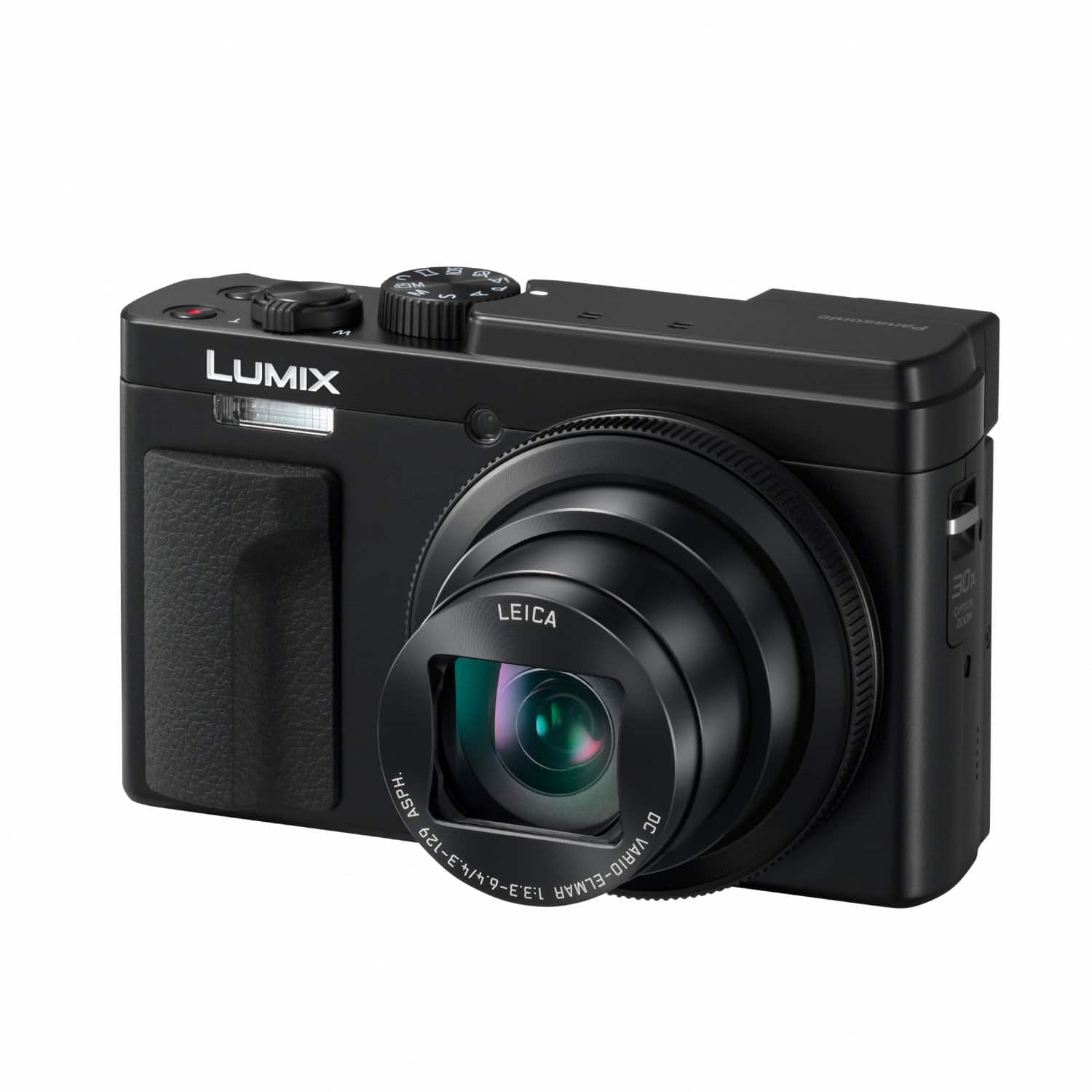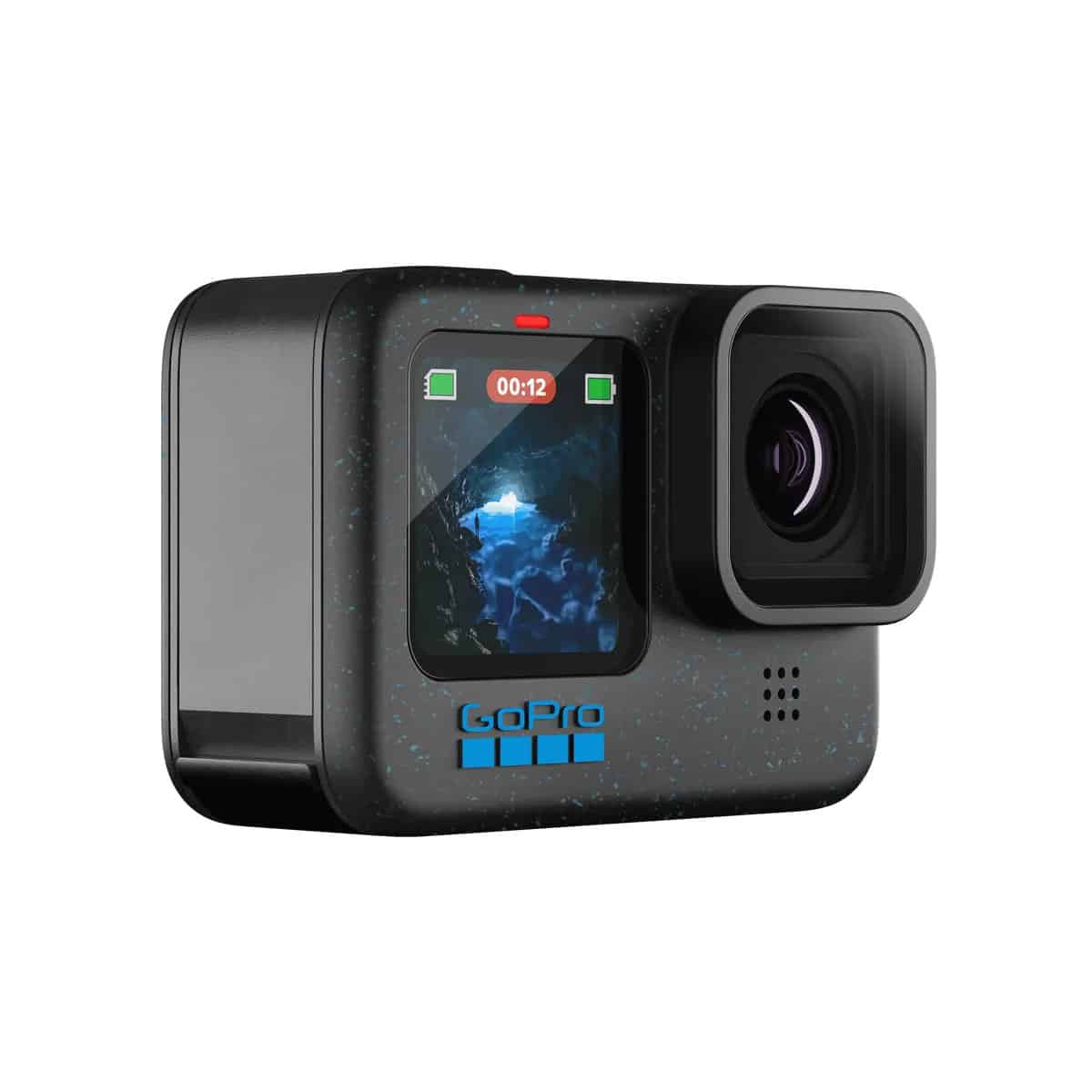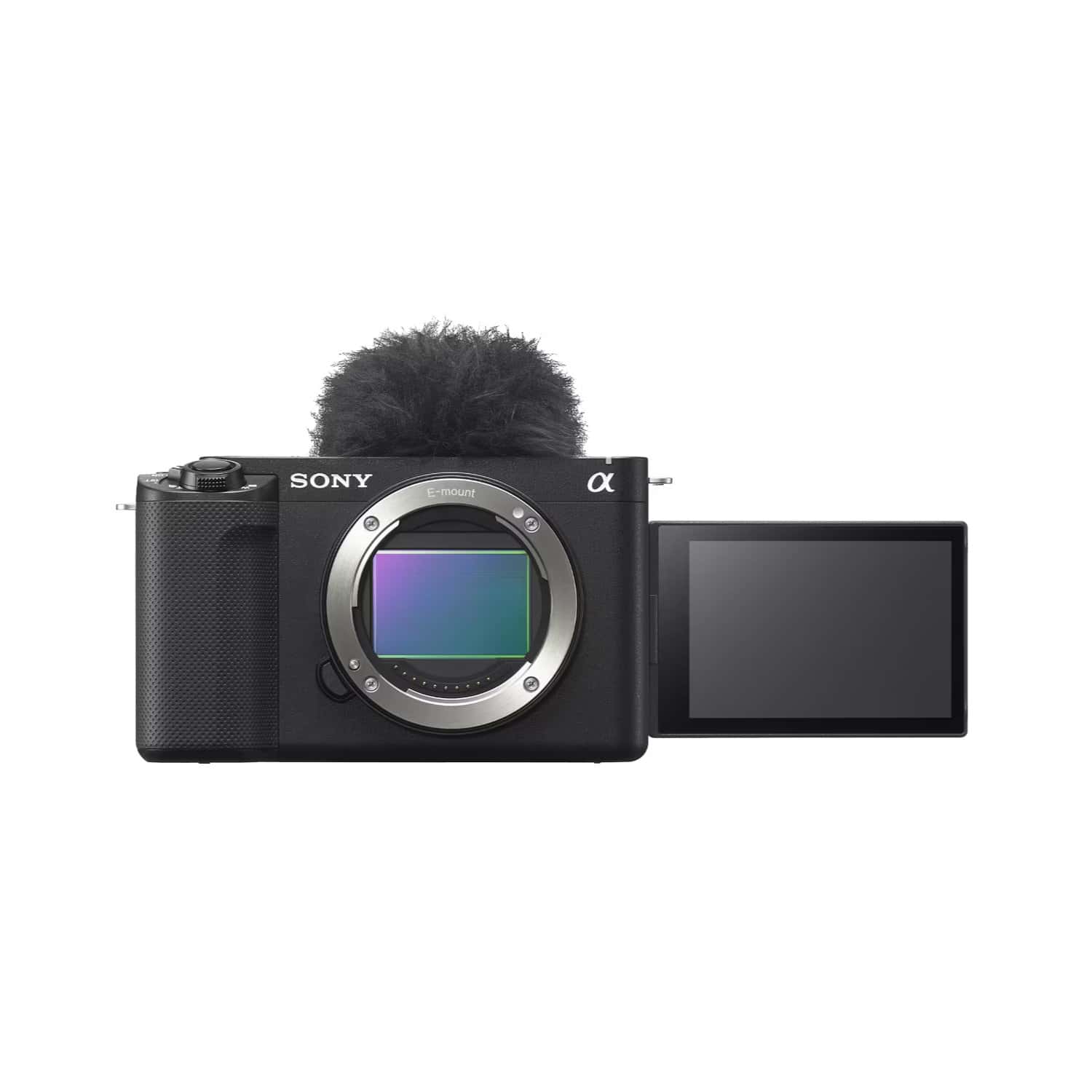Vlogging cameras have changed considerably over the last few years. As the number of content creators and consumers across various platforms continues to rise, viewers are expecting better-quality video and audio.
There’s no escaping from the fact that creating engaging and entertaining content is the only way to grow your channel and become a successful vlogger. But upgrading your camera and improving production quality is still important and your audience will love you for it.
There are literally hundreds of recording hardware options out there, but not all of them are ideal for vlogging.
Some cameras may be too large or too heavy for your requirements, while others lack the features that you’re looking for.
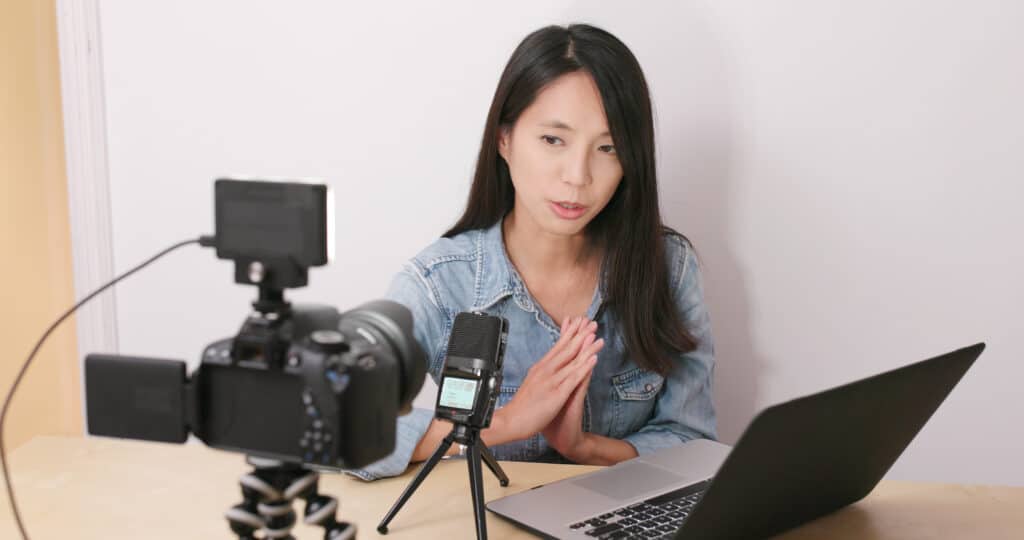
We’ve researched and tested dozens of vlogging cameras and compiled the best ones to come up with this list.
And these cameras have one thing in common – they all have a flip screen, or some way for you to see what you’re shooting as you film. We’ve found that these types of camera can especially help beginner vloggers with framing, setting the right exposure, and making sure the shot looks okay before they start rolling.
What to look for in a vlogging camera?
Several factors will come into play when deciding which flip screen vlogging camera is best for you. We’ve considered these while compiling this list, and you can decide which of these are important to you to help you make your decision.
Video quality
Irrespective of what type of camera you want, video quality will obviously be a very important area.
While multiple cameras that made our list can shoot in 4K, it might not actually be something you require – a lot of popular and successful bloggers still upload videos in 1080p (FullHD) or 2K. Keep in mind that many viewers can’t even enjoy 4K on their computer screen, phone or television.
That being said, shooting in 4K will give you more room to crop into footage without losing too much detail. And in the coming years, 4K will become more widespread, so it’s also an investment for the future.
Of course, video resolution isn’t the only thing that determines image quality. The amount of detail captured, low light performance, frame rate and field of view are just some of many other factors which determine how good a video looks.
Type of flip screen
Generally speaking, there are 3 different types of flip screens – fully articulating, 180° tilting flip screen, and front-facing screen. These are pretty self-explanatory:
A fully articulating screen moves around in any direction. It’s great if you want to film stuff from a low or high angle. This gives you the most freedom, but might not be necessary for your needs.
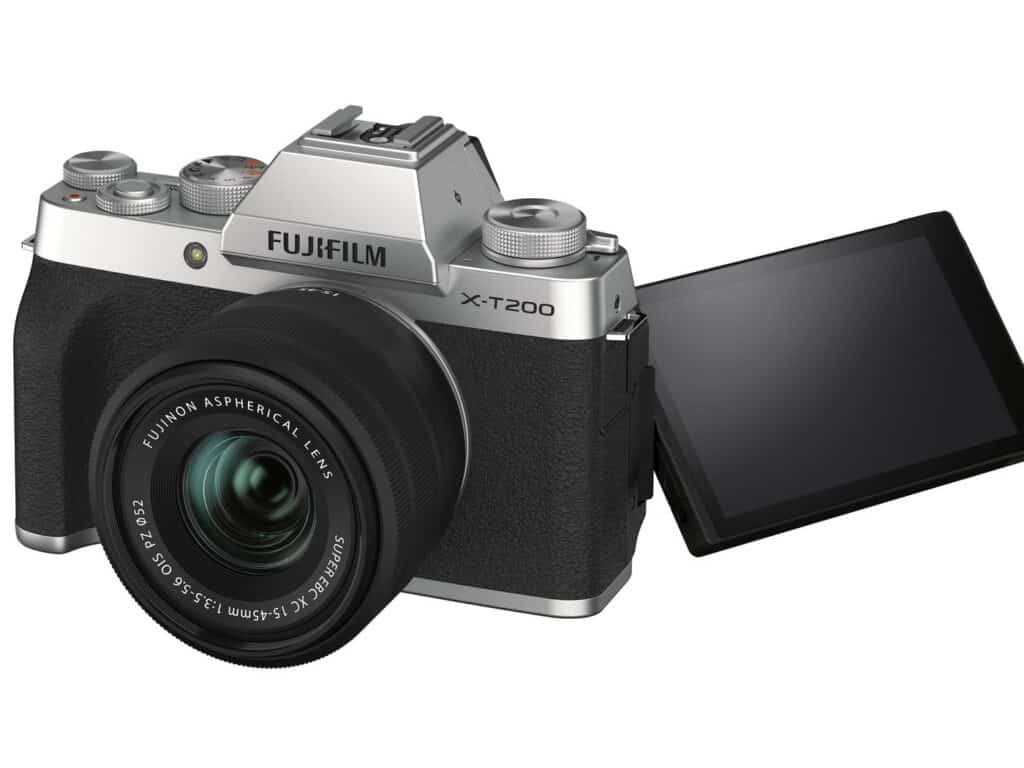
A 180° flip screen can only flip on one axis to face the front or back. It isn’t as functional as the fully articulating one, but it can handle most recording situations.
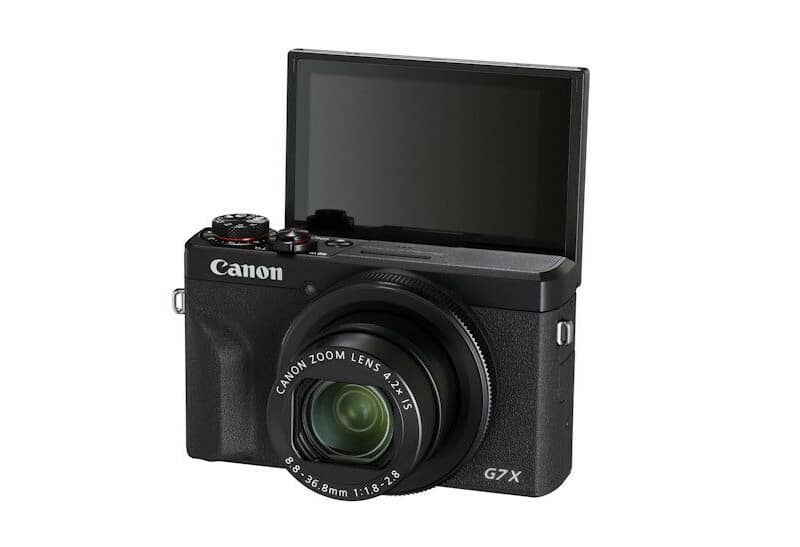
The last type is the front-facing screen, mostly found on action cameras like the GoPro, which have screens on the front and back. Yes, this isn’t a “flip” screen per se, but it allows you to see what you’re shooting whether the lens is pointed at you or away from you.
External Mic input
While most cameras feature a built-in microphone, they often don’t cut it. From sounding muffled to picking up too much background noise, they’re just not great for voice-heavy YouTube channels.
To improve audio quality, you normally want a quality external mic. But recording sound and video separately means having to synchronize them later, which can be a tedious process.
Some cameras feature an external mic input, which means they capture video and audio from the connected microphone in sync. This is the most streamlined way to shoot video.
Battery life
Typically, the larger the battery capacity, the longer it will last.
Of course, some other elements come into play, like what settings you’re using, how much power the camera draws, and so on, but that’s a general rule of thumb.
If you’ll be outside a lot, consider getting a camera with a long-lasting battery, or easily available extra batteries.
Camera Type
This is one of the most important things to think of before buying a camera for vlogging. Depending on what kind of videos you make, the type of camera for you will change.
For instance, if you’re going to be at home a lot, in a controlled environment, with your camera on a tripod, you can compromise on portability for better video quality or the ability to add lenses.
In such cases, a mirrorless hybrid (stills and video) camera or video-focused camera are going to yield the best results.
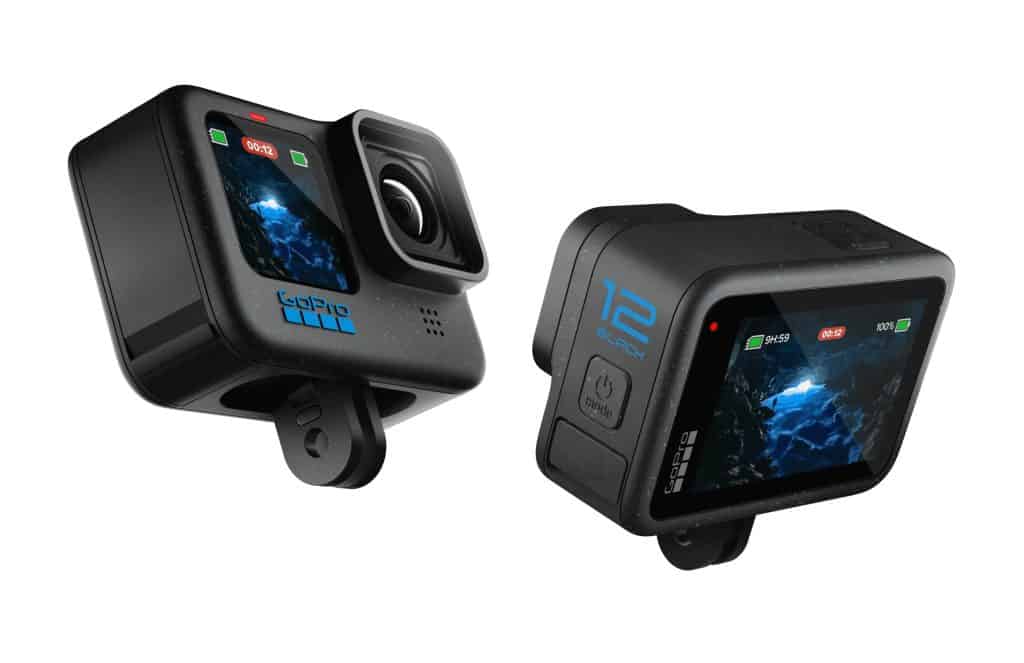
However, if you’re going to be filming yourself outdoors doing something adventurous, an action camera like a GoPro may be the better choice for you. There are also other options to consider, like compact point-and-shoot cameras, your smartphone, or pocket cameras like the DJI Pocket 2.
Of course, many vloggers will invest in multiple camera setups to suit different purposes.
Other features
The cameras on this list have some unique features that can make all the difference to the video you’re making. Some of them have in-built stabilization, ensuring your footage is smooth and jitter-free, while many of them have autofocus and light adjustment that reduces the effort that you have to put in while setting up for a shot.
That wraps up the key considerations you have in mind as you make your purchase decision. Now that we’ve got those out of the way, let’s go through our top picks.
Sony ZV-1 II
- Great autofocus
- Pocketable
- Bright lens
- Mediocre stabilization
- Battery life on the shorter side
The Sony ZV-1 was a great example of how Sony managed to revive the good old point-and-shoot camera which was close to becoming obsolete. Cheaper and easier to use than interchangeable lens cameras, the updated ZV-1 II is a hassle-free and compact camera that is a perfect first camera for vloggers.
The ZV-1 II is an ultra HD camera that can shoot videos in up to 4K at 30fps, giving you professional quality results. Compared to the original, the Mark II is equipped with a wider-angle lens which allows more to be captured in the frame–a significant advantage over most of its direct competition.
This pocket camera has been designed with ease-of-use in mind, and Sony has equipped it with some nifty features that make it perfect for vlogging.
Apart from a built-in video stabilization feature, the ZV-1 II also offers a ‘Background Defocus’ button that allows you to seamlessly transition to a shallow depth of field by widening the aperture.
In addition to the aforementioned features, the camera comes with a fully articulating 3-inch touchscreen display, making it great for shooting from any angle. Touch controls have been improved over the original ZV-1, improving the user experience.
The small proportions of the camera also mean that it comes with a small battery, and battery life is perhaps the one area where ZV-1 II falls short. It can film around 45-75 minutes of video on a single charge, which is less than the 85-110 minutes we see on cameras with large-capacity batteries.
Despite its shortcomings, the ZV-1 II remains one of the easiest cameras to use and record great video. For many YouTube channels, it will be the only camera needed since it is so versatile. Of course, its 1-inch 20.1MP BSI CMOS sensor makes it a capable stills camera, so there’s potentially a lot you can get out of it.
It’s worth noting that the original ZV-1 is still quite comparable, and might be worth considering if you want to save some money. There’s also the budget-oriented ZV-1F, which has a fixed prime lens instead of a zoom lens found on the ZV-1 II and ZV-1.
Canon PowerShot G7 X Mark III
- Little rolling shutter and no crop at 4K
- Built-in ND filter
- 10 minute 4K video limit
- Not the best AF performance
The Canon G-Series has been a popular choice for vloggers and YouTube content creators worldwide since it was first introduced. In fact, it was our top choice for a compact vlogging digital camera until the Sony ZV-series came along. Nevertheless, the G-series is still quite popular and the G7 X Mark III, in particular, is a great all-rounder.
The G7 X Mark III comes equipped with a 20.1MP, 1-inch sensor and can record uncompressed 4K video. Its intelligent auto-white balance makes it good for beginner vloggers who don’t want to spend time trying to get things right under mixed or artificial lighting. This iteration of the camera also answered people’s prayers and features a mic port (the Mark II didn’t) among plenty of other connectivity options.
A truly stand-out feature of the G7 X is its ability to live stream directly to YouTube, which is a huge advantage if that’s what you intend to do. Unfortunately, there are some prerequisites to this, so make sure you can actually take advantage of the feature.
While the camera doesn’t have an electronic viewfinder, it comes with a flip screen that flips up in its place. However, this flip screen isn’t as articulate as the one on the Sony ZV-1 and that’s one of the reasons this camera isn’t our top compact choice.
It also misses out on some of the advanced video recording features and smarter autofocus that the Sony offers. The image and video quality is right up there with the Sony, though, and its built-in stabilization is better, so it is still a very strong contender.
If the Livestream feature is more important than better video and the fully articulating screen, then the G7 X Mark III may be the better camera for you.
Sony ZV-E10
- Class-leading AF tracking with face and eye detection
- Good battery life
- 1080/120p slow motion capture
- headphone and microphone jacks
- No IBIS
- Slight 4K crop
While the Sony ZV-1 II is a great camera for most purposes, those looking for a step up in video quality and the extra versatility offered by an interchangeable lens camera should consider the ZV-E10 instead.
Belonging to the same video-focused ZV-series, the ZV-E10 has an E-Mount that makes it compatible with a large and mature catalog of Sony’s APS-C lenses. This gives you the flexibility to get the recording you want, by selecting a prime lens with a specific focal length, or a zoom lens that can cover your required shooting distances, for example.
When it comes to specs, the ZV-E10 is similar to Sony’s a6100, but it shares the spirit of the vlogging-focused ZV-1 compact. This makes it a more capable camera compared to the ZV-1, with a larger 24MP APS-C sensor, and a bigger battery that is capable of 80 minutes of recording off a single charge.
There aren’t a whole lot of cameras from other competitors that have the vlogger-focused DNA offered by Sony’s ZV or ZV-E series.
However, we can’t not mention the Nikon Z30, which is Nikon’s direct competitor to the ZV-E10. Between the two, though, the Sony has better battery life, the inclusion of a headphone socket, a wider range of lenses and class-leading autofocus that leads us to recommend the ZV-E10 over it.
Sony also offer the ZV-E1 which is the next step up in the Vlogcam range, but it comes at a significantly higher price point that is difficult to justify unless you’re vlogging professionally.
DJI Pocket 2
- Great for handheld recording
- 3-axis gimbal stabilization
- Excellent object and face tracking
- Not water resistant
- Mediocre low-light performance
This camera on a gimbal from DJI might not be much better than your smartphone for studio recordings, but it offers unique features that make it particularly good for recording video out and about while on the move.
For starters, it can shoot in a variety of frame rates and resolutions, including 4K at 60fps, which many mid-range mirrorless cameras can’t do. This makes it excellent for shooting footage that you want to slow down for some B-roll.
And since it sits on a gimbal, it’s easy to hold out in front of you and talk to while walking. We tested this out while jogging, too, and the Pocket 2 did a brilliant job at smoothing footage out and eliminating camera shake – better than most optical image stabilization implementations that are built into cameras.
The Pocket 2 doesn’t offer a conventional flip screen – it comes with a single screen, but because the camera itself rotates around to point at you in selfie mode, you can always see what you’re filming.
While a GoPro or DJI Osmo Action are more adept for filming intense action, the reality is that when you’re filming outdoors you’re not usually filming extreme sports or anything similar. If you’re travel vlogging and doing a city tour, for example, you’re mostly walking around and filming yourself and your surroundings. For these kinds of scenarios, the DJI Pocket 2 is just much more practical.
New improvements over the previous iteration include a wider 20mm equivalent lens, a larger 1/1.7” sensor, better autofocus, and a multi-directional mic that the company calls DJI Matrix Stereo.
Making this an even better option for vloggers are some great add-on accessories. These include a DJI Do-IT-All handle and mic transmitter that allows for a compact audio solution that you can use to wirelessly record crisp audio.
Insta360 Go 3
- Tons of placement possibilities
- Stabilized 2.7K video
- Two mics produce good audio recordings
- Action Pod with 2.2" flip touchscreen for remote viewing
- Lacks 4K
- No storage expansion slot
One of the most innovative action cameras in recent years, the Insta360 Go 3 has a modular design that makes it an extremely versatile vlogging camera.
The camera unit itself is tiny, waterproof up to 5m, and features a magnetic backside. As a result, it can squeeze into the smallest of places and snap onto any magnetic surface. This opens up a whole new world of recording possibilities, like placing it on the bottom of a glass as liquid is poured in, or slapping it on your fridge.
With an included magnetic neck strap, the Go 3 also functions as a wearable camera, and a plethora of other mounting accessories means you can record virtually anywhere, at any angle.
The Go 3 can be slot into its accompanying Action Pod, which makes it feel more like a traditional action camera, both in terms of size and usage.
But the Action Pod has other purposes, like charging the camera when attached and functioning as a remote viewing monitor when separated. Just note that the Action Pod itself isn’t waterproof, so don’t go submerging it in water.
Video quality is solid, with Insta360’s FlowState stabilization and Horizon Lock ensuring videos come out smooth. However, the Go 3 lacks 4K recording and instead caps out at 2.7K/30fps. This is more than enough for most purposes, but those with a strict requirement for 4K footage will need to look elsewhere.
Canon R7
- Excellent autofocus
- IBIS
- Accepts RF lenses
- Not many RF-S lenses available yet
The Canon EOS R7 is carving a niche in the vlogging sphere owing to its remarkable video capabilities, merging high-resolution imaging with agile handling. This compact yet robust unit stands as a powerful contender in the APS-C camera sector against the likes of the Fujifilm X-S20 and Sony a6700.
For vloggers and content creators, the EOS R7 is a powerhouse. It offers uncropped 4K 60p, and 4K 30p oversampled from 7K, along with smooth 1080p recording at up to 120 frames per second. Moreover, users can anticipate around 60 minutes of continuous video recording before hitting overheating and record limits.
Enhanced by Canon Log-3 and clean HDMI out capabilities, the camera allows for post-production flexibility, delivering crisp, clear visuals that won’t let you down. Plus, the presence of both microphone and headphone jacks facilitates high-quality audio recording and monitoring.
The R7 has a reassuringly chunky feel, courtesy of its thick grip and weather-sealed body, unlike the Sony a6600 and a6700 which have poor ergonomics. Its articulating touchscreen adds to the ease of control, making it a favorable choice for vloggers looking for quick setting adjustments and reviewing footage on the go.
While Canon introduces a new line of RF-S lenses, keeping the APS-C format in mind, the R7 also maintains compatibility with full-frame RF lenses, offering versatility for various shooting needs. It can also adapt EF and EF-S lenses via the Mount Adapter EF-EOS R, expanding the options for videography.
Overall the EOS R7 embodies a revolutionary addition to the Canon lineup, especially for vlogging enthusiasts. Its video capabilities, combined with an impressive image stabilization system and robust autofocus technology, make it an attractive choice for content creation.
Fujifilm X-S20
- Dedicated vlogging mode
- 7-stop stabilization
- Long battery life
- Not weather-sealed
- Prone to overheating
When it comes to APS-C cameras, Fujifilm is hard to beat and in the X-S20 they’ve produced a close to perfect hybrid camera for vloggers.
Weighing in at just 491g, the X-S20 boasts an improved battery life, capable of shooting 800 more frames on a single charge compared to its predecessor, the X-S10. The camera’s enhanced 5-axis in-body image stabilization, providing up to 7 stops of stabilization, is a significant upgrade, promising smoother video recordings, even in the most challenging situations.
Equipped with a previous-generation X-Trans IV sensor, the camera doesn’t compromise on image quality, offering a substantial 26.1-megapixel output. The marriage of this sensor with the latest X-Processor 5 enables powerful new subject recognition and auto-tracking features, a bonus for vloggers needing dynamic focus capabilities.
The X-S20 stands out in the crowded market with its video capabilities. It supports internal recording of 6.2K 30p video in a 4:2:2 10-bit format, offering creators an excellent degree of flexibility in post-production. The open-gate recording feature, utilizing the full sensor size, is another highlight, facilitating intricate editing work post-shooting.
For vloggers looking for versatility and quality in video recording, the X-S20 doesn’t disappoint. It is capable of outputting in Apple ProRes RAW or Blackmagic RAW when connected to respective devices, promising professional-level video output.
The newly introduced “Vlog” mode on the main dial provides easy access to vlogging-specific settings. The features like Product Priority Mode, which focuses promptly on products displayed to the camera, and the Background Defocus Mode, which enhances background blur in videos, make it an asset for creators specializing in product showcases and reviews.
Overall, it’s a real toss-up against the Canon R7 in the APS-C ILC market at this price point. The X-S20 benefits from a more mature APS-C lens ecosystem whereas Canon is still playing catch up. However, the R7 does have Canon’s excellent AF performance going for it. In any case, you can’t go wrong with either.
Canon EOS M50 Mark II
- Dual Pixel phase detection autofocus
- Livestream direct to YouTube
- Generous grip and great touchscreen interface
- Heavily cropped 4K/24p footage
- No IBIS
The EOS M50 Mark II by Canon is a notable vlogging mirrorless camera that won’t break the bank. It’s the camera for you if you don’t mind losing out on proper 4K shooting capability – we’ll explain that below. The Mark II is a minor step up from the already popular original EOS M50. The difference between the two is the addition of a slightly better UI and an HDMI feed. Otherwise, the two are largely the same.
As we mentioned, the EOS M50 is a great camera, barring the option to shoot in 4K. It gets an APS-C size sensor, the ability to change lenses, and a fully articulating flip screen – all you’ll need for some great vlogging footage.
It offers Canon’s Dual Pixel and Eye Detect autofocus with subject tracking, and we found that it worked flawlessly. We tested its low light capabilities and they were just as impressive, with an ISO range of 100 – 25,600.
We mentioned that the EOS M50 Mark II can’t shoot in proper 4K. This is because the Canon does a 2.56x crop when it shoots in 4K. Essentially, if you’re shooting with a 15mm lens, it’ll be the equivalent of shooting with a 38.4mm wide lens.
And that’s the biggest downside of the camera – there isn’t too much versatility when it comes to video settings. If you’re fine with 1080p, you can shoot in 24fps or 60fps. If you want 120fps you’ll have to drop to 720p, while 4K is almost unusable.
But overall, this is a fantastic vlogging camera there is at this price point and the lack of 4K is just one of the things you’ll have to compromise on.
Panasonic Lumix ZS80 / TZ95
- Pocketable size with 30x superzoom
- 4K at an affordable price
- Live Cropping features
- Small sensor
- Poor battery life for video
If you fancy a smaller point and shoot camera that doesn’t involve the hassle or bulk of interchangeable lens cameras, the ZS80 is a cheaper alternative to the likes of the Sony ZV-1, Nikon Z30 or Canon G7X Mark III.
The Lumix ZS80 offers a 3” tilting LCD screen, can record in 4K@30fps, and can automatically adjust exposure. The touch screen functionally is highly responsive and lets you easily pull/switch focus while recording by just tapping on the screen.
The headline feature is the Leica DC VARIO ELMAR lens with a broad focal range, reminiscent of the travel zoom compacts that used to be widespread. While the impressive zoom might not see much use in regular vlogging, it does give you the option of getting closer to the action at events or competitions, for example, although stabilization with a tripod is recommended.
Another feature we quite enjoyed was the 4K live cropping, which is essentially like a time-lapse pan shot. You can select a start frame, end frame, and an overall time for the clip, and the camera will stimulate a zoom/pan effect as you would get with a gimbal or tripod. We also tried out the in-built 5-axis stabilization – it works well for the price that the camera sits at, but isn’t the best system out there.
The low price also brings some other compromises – the biggest being the small sensor. In low light it just can’t match the more recent 1-inch point and shoot cameras that are popular these days. That said, the Lumix ZS80 offers substantially more than most other cameras at this price point and is an ideal budget flip screen camera.
GoPro HERO 12 Black
- Tough body
- Waterproof up to 33ft
- Smooth 5.3K 60p
- Struggles in low-light
- Lacks support for GPS data
- Some overheating issues
GoPros are synonymous with action cameras, and there’s no doubting their credibility in that segment. However, the newer GoPros are also rather capable cameras, otherwise, as well. The best of the lot, unsurprisingly, is the latest one – the Hero 12 Black.
With an unchanged design from the Hero 11, the Hero 12 Black comes with a high resolution, if a little small, front-facing screen. However, it is a little choppy to use and isn’t as seamless as the one on the DJI Pocket 2, or any of the other larger DSLR cameras on this list. But then again, the GoPro wasn’t build with recording everyday stuff in mind. Instead, it’s designed to record action.
And when it comes to recording action, the HERO 12 Black has it all. Super high frame rate recording capabilities (5.3K@60fps or 4K@120fps), waterproof up to 33-feet, and a massive ecosystem of accessories that makes it capable of recording under virtually every environment and situation.
Sharing the same sensor and image processor as its predecessor, the HERO 11, the image quality hasn’t improved considerably. However, there are a number of other refinements, such as improved battery life, better stabilization, and GP Log and Timecode Sync that make it a worthwhile upgrade.
The newest HyperSmooth 6.0 stabilization is simply the best in the business. Even without a dedicated gimbal, the GoPro handles all the stabilization for you, with up to 45-degree horizon levelling capabilities.
Just like other action or pocket cameras like the Insta360 Go 3 and DJI Pocket 2, one of GoPro’s biggest drawbacks is its size and the small sensor that it houses. As a result, low-light video isn’t great. Also, because of its ultra wide-angle nature, you do get a noticeable fish eye effect which isn’t ideal for recording a home vlog.
Sony ZV-E1
- Very portable full-frame camera
- Widescreen cinematic vlog mode
- Quality vlogging mic
- Single SD card slot
- No mechanical shutter
While the ZV-series was originally born to meet the needs of Gen-Z content creators, Sony took vlogging to the pro level with the release of the ZV-E1. What sets it apart is the full-frame sensor that somehow fits into a remarkably compact body, promising stunning visuals for on-the-go content creators.
When it comes to vlogging, image stability is crucial. The ZV-E1 delivers with its in-body image stabilization (IBIS), which often eliminates the need for an external gimbal. Paired with a high-quality microphone, it ensures crisp audio without much added gear.
A significant advantage of the ZV-E1 is its AI-driven features, designed primarily for solo vloggers. The AI not only enhances autofocus capabilities, recognizing subjects from humans to insects but also optimizes video framing automatically. This ensures the subject remains consistently in focus and properly exposed, particularly helpful when dealing with variable lighting.
Other handy features include Auto Framing for more dynamic video presentation and Framing Stabilizer for steady walk-and-talk footage. Plus, the Product Showcase mode allows creators to effortlessly shift focus between themselves and items they’re showcasing.
With its compact design, you’d be forgiven for thinking the ZV-E1 would compromise on battery life. But it’s powered by the robust NP-FZ100 battery, supporting around 95 minutes of video recording. Moreover, the camera is adaptable for live streaming, albeit with certain feature restrictions at higher resolutions.
In terms of lenses, the body can be combined with the FE 28-60mm F4-5.6 zoom, but vloggers may opt for wider lenses for better self-recording. As for video quality, the 12MP sensor is purpose-built for 4K recording, ensuring pixel-perfect results without line skipping or pixel binning.
Overall, the ZV-E1 is perhaps the very best vlogging camera on the market right now, but its high price makes it inaccessible for the majority. It’s definitely a camera for those who are vlogging professionally and looking to step up their video creation process.
What else do you need to vlog?
There you have it. That’s our list of the top vlogging cameras with a flip screen, across multiple price brackets. The best camera for you depends on what your requirements are and what kind of content your vlogs are going to cover.
Irrespective of what camera you choose, you will have to upgrade it eventually and even invest in other great features to aid your video-making process. Here’s a quick look at some other things you’ll want to get if you’re serious about vlogging:
Audio
While all the cameras on this list have an in-built microphone, none of them will record the best audio possible. These mics have 3 main limitations – the audio quality, in general, will be sub-par, there will be a lot of wind noise if you’re recording outdoors, and the mics are designed to pick up audio from all around it and not just the subject (you).
You can resolve this by getting an external mic. A camera that has a mic port will automatically use the audio that’s recorded by the mic when it’s plugged in. Some of the cameras on this list, like the Sony a6600, will have a cold shoe mount which you can use to mount a boom mic on. These mics also have wind muffs to reduce buffeting.
If your camera doesn’t have a mic port, you’ll have to get an external audio recording and sync the audio while editing.
Tripod
A cheap tripod is fine if you’re going to be shooting pictures, but investing in a video tripod can make a world of a difference. These will help you get some smooth pan shots and will be great for shooting time-lapses. On the other hand, getting a smaller one also lets you use it as a ‘monopod’ to vlog with. Decide on what works for you, but know that it’s a great piece of equipment to have.
Stabilization
Shaky footage can be annoying to watch. Modern-day cameras have some sort of stabilization built into them but they don’t match the smoothness that an external gimbal can provide. Gimbals can be expensive and cost just as much as your camera itself. Getting one will increase the quality of your footage if you’re going to be moving around a lot or shooting something cinematic, however, it’s not an investment worth making if you’re just getting started.
Spare Batteries
If you’re recording at home and able to leave your camera connected to the charger during recording, then spare batteries won’t be a concern. However, if you are going on trips where access to outlets is potentially limited, you’ll want to make sure you have some extra batteries available as backup
Memory Cards
Almost all digital cameras will need somewhere to store the recorded video footage, since unlike phones, don’t have their own flash storage. Most mirrorless and DSLR cameras will take SD cards while the smallest cameras like the DJI Pocket 2 or GoPro HERO 10 take smaller microSD cards.
Necessary Cables and Adapters
New camera purchases will almost always have a charging and/or data transfer USB cable. However, if for example the computer you are connecting to is a MacBook Pro without the old school USB type A port, you might need to purchase a USB-C to USB-A adapter.
FAQ
How Important Is An External Mic Input?
An external mic input is a missing feature on many DSLR and mirrorless cameras. This is because although they are great for video, many people are primarily or exclusively buying them to take photos.
Many cameras such as the Canon G7X or Panasonic Lumix GH5 have very capable built-in microphones. In fact, many professional-looking YouTube videos you’ve seen are made using internal mics. But as soon as you leave a controlled environment and start moving around, going outside or have background noise, you might be in trouble.
An external mic input gives you the option of adding a shotgun mic (attached using the hot shoe) or better yet, a wireless lavalier mic that will always be a superior audio recording solution.
What about camcorders with flip screens?
Camcorders are a rare sight these days, especially among YouTubers. Mirrorless cameras have replaced them, because having interchangeable lenses gives them more versatility, and naturally bigger sensors means less noise and superior depth of field.
Even though you can find cheap camcorders with flip screens, you should avoid them as the HD video quality is worse than your cell phone.
While professional filmmakers and videographers are still using camcorders, they’re very fancy ones which cost tens of thousands of dollars! Very, very few YouTube vloggers are using this kind of equipment.
Why Haven’t You Recommended A DSLR Camera?
While DSLRs aren’t completely obsolete, mirrorless cameras have several advantages that just make them better for recording video. For example: IBIS, faster autofocus, silent shooting, the ability to see exposure changes on the fly and typically faster FPS. While some of the latest high-end DSLRs are finally catching up, mirrorless cameras are still far ahead and they’re smaller and easier to carry, too!
